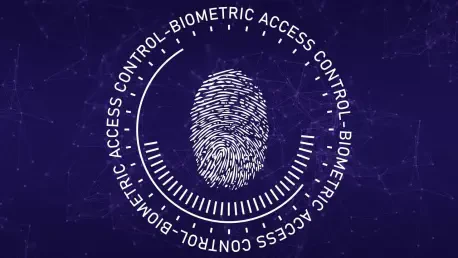The rapidly evolving landscape of cybersecurity threats presents an array of challenges for businesses and insurers, compelling a reevaluation of risk management strategies. As technological developments continue to unfold, the proliferation of cyber threats requires proactive measures to protect sensitive data and systems. Cybercriminals are becoming more sophisticated, necessitating an agile response from the insurance industry to provide coverage that aligns with emerging risks. This situation demands close collaboration between organizations and insurers to anticipate vulnerabilities and proactively adapt insurance solutions. The dynamic nature of cyber threats and exposures, coupled with the growing interconnectivity of industries, ensures that managing these challenges remains at the forefront of concern for all parties involved. The exploration of these concepts offers insights into both the immediate and long-term considerations within the rapidly evolving cyber risk sphere.
Emerging Threats and Evolution of Coverage
Ransomware and Business Email Compromise have taken center stage as significant threats underscoring the current cyber risk landscape. These cybercrimes are fueled by the burgeoning reliance on technologies such as cloud storage and video conferencing, prevalent in the contemporary hybrid work environment. Reports from the Cybersecurity and Infrastructure Security Agency suggest that the majority of ransomware attacks in the United States stem from phishing emails, wherein malicious actors infiltrate systems by embedding malware in unsuspecting recipients. The repercussions of such attacks are severe and far-reaching, affecting confidential data, financial resources, customer relationships, and reputational standing. A prominent solution to mitigate these risks highlights the importance of thorough employee training. Workers equipped to identify deceitful electronic communications and understand their pivotal role in organizational protection can significantly reduce vulnerability to cybersecurity threats. These proactive measures help fortify defenses against increasingly sophisticated cyber threats.
In parallel with the rise in malicious activities is the emergence of non-malicious events driven by technological failures rather than deliberate malice. Incidents like the CrowdStrike software outage in 2025, caused by the deployment of a flawed update, illustrate how unintentional disruptions can impact economies worldwide. Such occurrences underscore the necessity of maintaining agile and comprehensive contingency plans beyond traditional safeguards. Cyber insurance policies exhibit considerable variance in addressing these disruptions, with some extending coverage and others imposing exclusions. Addressing non-malicious vulnerabilities calls for a harmonized effort among insurers, brokers, and clients. The collective focus on scrutinizing existing systems, enhancing protective protocols, and negotiating precise coverage agreements is crucial to adequately mitigating the implications of technical failures. This alignment is vital in fostering resilience within increasingly interconnected digital ecosystems.
The Role of Artificial Intelligence
Artificial Intelligence introduces another layer of complexity in the cyber insurance domain. While AI offers beneficial prospects in threat detection and rapid response, it simultaneously raises concerns by potentially exacerbating risks through innovative cybercriminal strategies. The advent of deepfake technologies fueled by AI demonstrates the dual nature of this advancement, highlighting potential challenges in safeguarding information integrity. The dilemmas presented by AI-driven technologies extend to liability intricacies regarding AI-derived decisions. Although AI poses significant advantages in bolstering cybersecurity measures, it necessitates collaborative efforts between insurers and clients to question its secure application diligently. The overarching concern lies in developing a standardized understanding of AI’s role in cybersecurity efforts, accounting for both its protective strengths and the challenges it introduces. As AI capabilities expand, its influence prompts reevaluation across industries, stressing the need for strategic dialogue in formulating viable solutions to potential risks.
Within the U.S. cyber insurance market, there is a noticeable rise in demand for policies, with significant capacity available for both primary and excess insurance roles. A comprehensive report from NAIC in 2025 indicates a consistent increase in cyber insurance purchases, pointing towards a robust market dynamic. Minor drops in premium rates, observed across recent reports from international insurance brokers, signal potential stability and growth within the industry. Effective risk selection remains crucial, as insurers prioritize partnerships with clients exhibiting strong cybersecurity measures like multi-factor authentication, routine software updates, and rigorous password protocols. Understanding a client’s security stance becomes essential, enabling insurers to offer invaluable expertise in safeguarding assets and managing claims efficiently. Emerging insurers such as MSIG USA exemplify a refreshingly novel approach free of legacy constraints, underpinning their capabilities with a solid infrastructure. This strategy allows them to innovate and constructively address client-driven exposures in the cyber domain.
Collaborative Approaches and Future Considerations
Ransomware and Business Email Compromise have emerged as major threats in today’s cyber risk environment, fueled by increased use of technologies like cloud storage and video conferencing. The Cybersecurity and Infrastructure Security Agency reports that most ransomware attacks in the U.S. originate from phishing emails, where attackers embed malware to infiltrate systems. These incidents have severe consequences on sensitive data, financial stability, customer trust, and reputation. A critical solution lies in employee education. Training staff to spot deceptive emails and understand their importance in safeguarding their organization can substantially reduce susceptibility to such threats. These preventive steps are essential in strengthening defenses against evolving cyber dangers.
Additionally, non-malicious events caused by technological failures, like the 2025 CrowdStrike outage from a flawed update, highlight the need for flexible contingency plans. Cyber insurance policies vary, with some covering disruptions but others exclude them. Addressing these vulnerabilities requires collaboration among insurers and clients. Working together to scrutinize systems, refine protective measures, and negotiate precise policies is crucial for resilience in a connected digital world.









